A total solar eclipse will be visible in the U.S. this spring for the first time in 7 years
The next total solar eclipse in the United States, the first in seven years, will arrive this spring.
If you missed the last total solar eclipse in North America on Aug. 21, 2017, or the annular solar eclipse that occurred on Oct. 14, 2023, be sure to mark the upcoming total solar eclipse on your calendar.
What is a total solar eclipse?
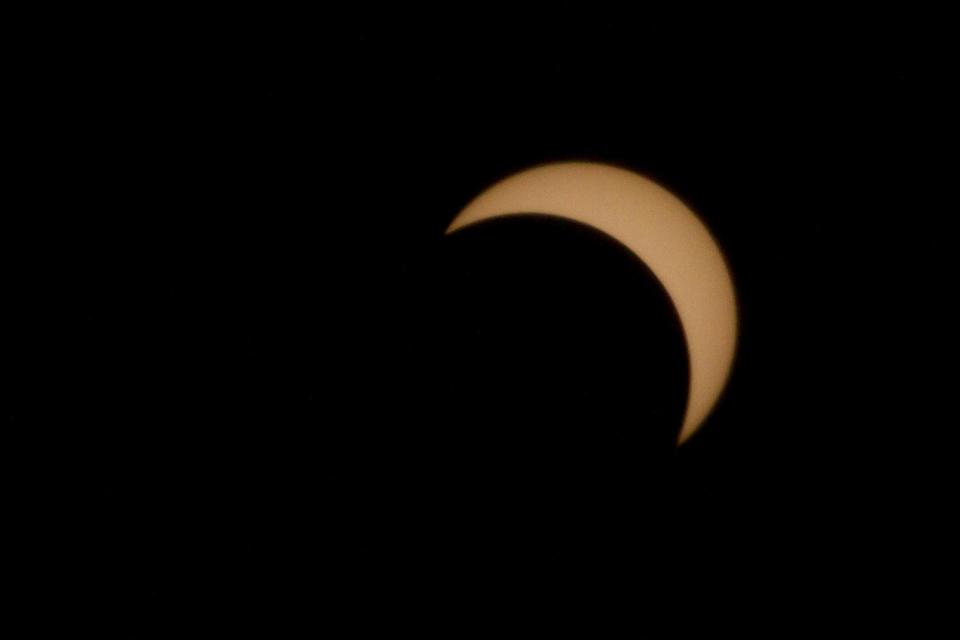
During a total solar eclipse, the Moon passes between the Sun and Earth and completely blocks the face of the sun Sun, according to NASA.
No matter the time of day it is, the sky will darken as if it were dawn or dusk. Weather permitting, people along the path of totality will see the Sun’s corona, the outer atmosphere, which is usually obscured by the bright face of the sun.
When is the total solar eclipse?
The next total solar eclipse is on Monday, April 8.
The duration of totality will last four minutes and 27 seconds, nearly double that of the total solar eclipse seen in the United States in 2017, according to Great American Eclipse.
Although the next total solar eclipse will be visible elsewhere on Aug. 12, 2026, if you miss out on April 8, the next total solar eclipse visible from the contiguous U.S. won’t arrive until Aug. 23, 2044.
What time will the total solar eclipse happen?
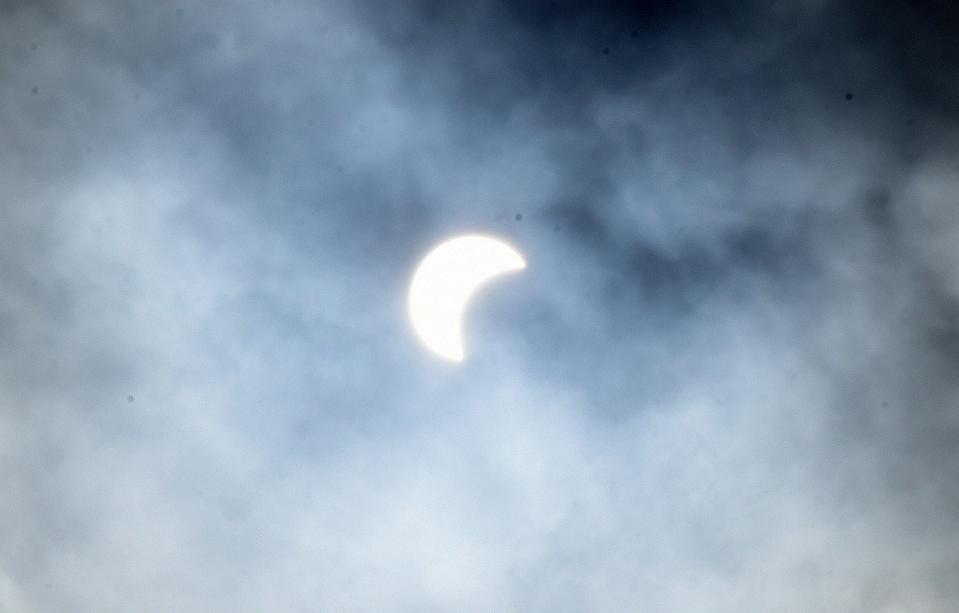
The path of totality — when the moon completely covers the sun, creating a total eclipse — runs from Mexico (Sinaloa to Coahuila) to the United States (Texas to Maine) to Canada (Ontario to Newfoundland), according to TimeandDate.com.
The following U.S. cities are in the path of totality, according to NASA:
Dallas, Texas.
Idabel, Oklahoma.
Little Rock, Arkansas.
Poplar Bluff, Missouri.
Paducah, Kentucky.
Carbondale, Illinois.
Evansville, Indiana.
Cleveland, Ohio.
Erie, Pennsylvania.
Buffalo, New York.
Burlington, Vermont.
Lancaster, New Hampshire.
Caribou, Maine.
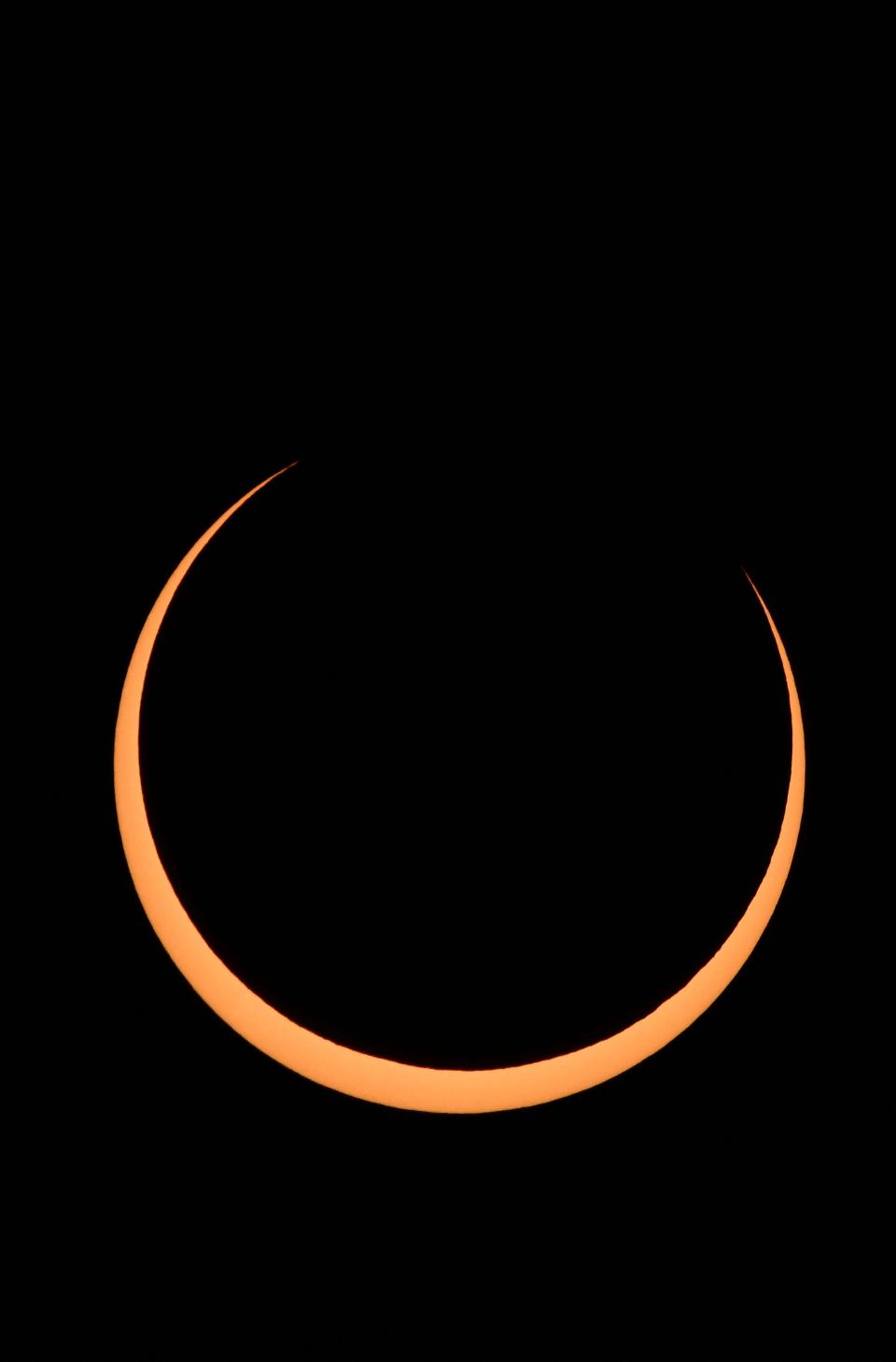
Areas near these cities will experience a partial eclipse before and after the time totality is expected. A partial eclipse will be visible across nearly all of the U.S. and small portion of western Europe.
Global eclipse events will occur at the following local times:
Partial eclipse will first be visible at 11:42 a.m.
Full eclipse will first be visible at 12:38 p.m.
Maximum eclipse will be visible at 2:17 p.m.
Full eclipse will last be visible at 3:55 p.m.
Partial eclipse will last be visible at 4:52 p.m.
In Delaware:
Partial eclipse begins at 2:07 p.m.
Maximum eclipse begins at 3:23 p.m.
Partial eclipse ends at 4:34 p.m.
The total solar eclipse will be visible at 4:41 p.m., which only 0.55% of the population, or 43,800,000 people, will be able to see worldwide in areas where the eclipse is visible. As for any part of the eclipse, not just totality, 8.19% of the population, or 652,000,000 people, will be able to tune in, according to TimeandDate.com.
Stages of a total solar eclipse
Many people focus on the moment of totality when they think of a total solar eclipse, but there are actually several distinct stages of the event that those observing can keep an eye out for.
Here are the phases of a total solar eclipse, according to NASA:
During a partial eclipse, the Moon passes between the Sun and the Earth and does not completely cover the Sun at first, resulting in the Sun appearing to have a crescent shape. When the Moon first touches the Sun, it is also called the “first contact.”
Shadow bands are long, dark, rapidly moving bands separated by white spaces that can be seen on the ground or on the sides of buildings just before or after totality.
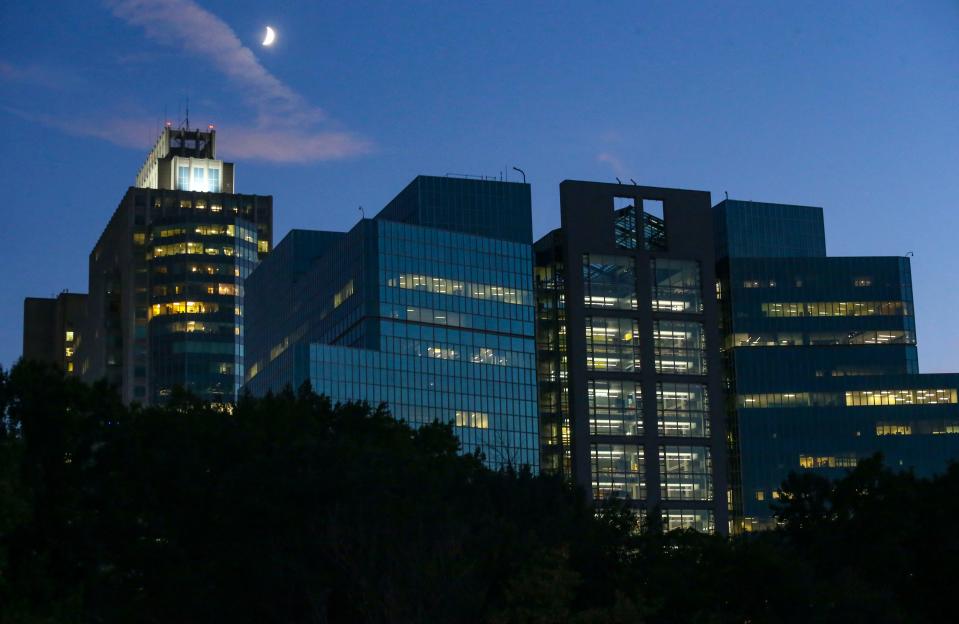
Baily’s beads are the several points of light that shine around the Moon’s edges as it continues to move across the Sun. They are caused by light rays from the Sun streaming through the valleys along the Moon’s horizon. Baily’s Beads only appear for a short amount of time and may not be noticeable to everyone watching the total solar eclipse.
The diamond ring effect occurs at the beginning and end of totality during a total solar eclipse. As Baily’s beads begin to disappear, and the last bits of sunlight pass through the valleys on the Moon’s limb, the faint corona round the sun is just becoming visible along the edge of the Moon’s shadow and looks like a ring with shining diamonds on it.
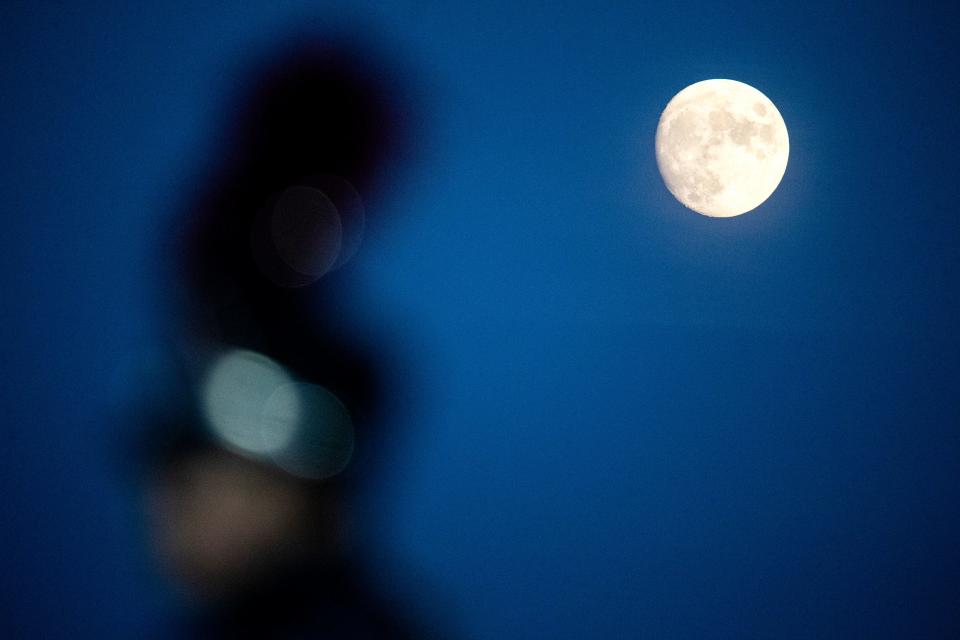
Totality occurs once the diamond ring disappears and there is no longer any direct sunlight, also known as “second contact.” At this point, eclipse viewers may be able to see the chromosphere — a region of the solar atmosphere that appears as the think circle of pink around the moon — and the corona, appearing as streams of white light.
As the Moon continues to move across the Sun, brightening will appear on the opposite side from where the diamond ring appeared at the beginning. This is the lower atmosphere of the sun beginning to peek out from behind the Moon. Your eclipse glasses must be on before the first flash of sunlight appears around the edges of the Moon, known as “third contact.”
As the final stages of the eclipse commence, the beginning process you just witnessed will be mirrored. The diamond ring will appear first, followed by Baily’s beads and the shadow bands before the entire Sun is visible again. “Fourth contact” is the moment that none of the Sun is covered by the Moon’s shadow and signals the end of the eclipse.
ICYMI: Winter emergency car prep: What to keep in your car, check before driving this winter
Solar eclipse viewing safety
Do not look directly at the sun without eye protection specifically designed for solar viewing. Without protection, the sun’s radiation can burn the retinas in your eyes, leading to permanent damage or blindness.
Eclipse glasses can be purchased at a variety of retailers in-store or online, and you also can indirectly view the eclipse by using a pinhole projector.
The sun will be very bright during the eclipse, so if you plan to watch and will be in direct sunlight for hours, wear protective clothing, a hat and lather on sunscreen to prevent skin damage.
When the eclipse is at totality, this is the only moment you can briefly remove your eclipse glasses and look at the sun directly with your eyes.
2023 taxes: Tax season 2024: When to file 2023 taxes, tax filing deadline, refund window and more info
2024 development in Delaware: What to know about Delaware's warehouse and industrial projects slated for 2024
Enjoy Newark: Take advantage of a quieter Newark with these 11 activities while UD students are at home
Solar eclipse fun facts
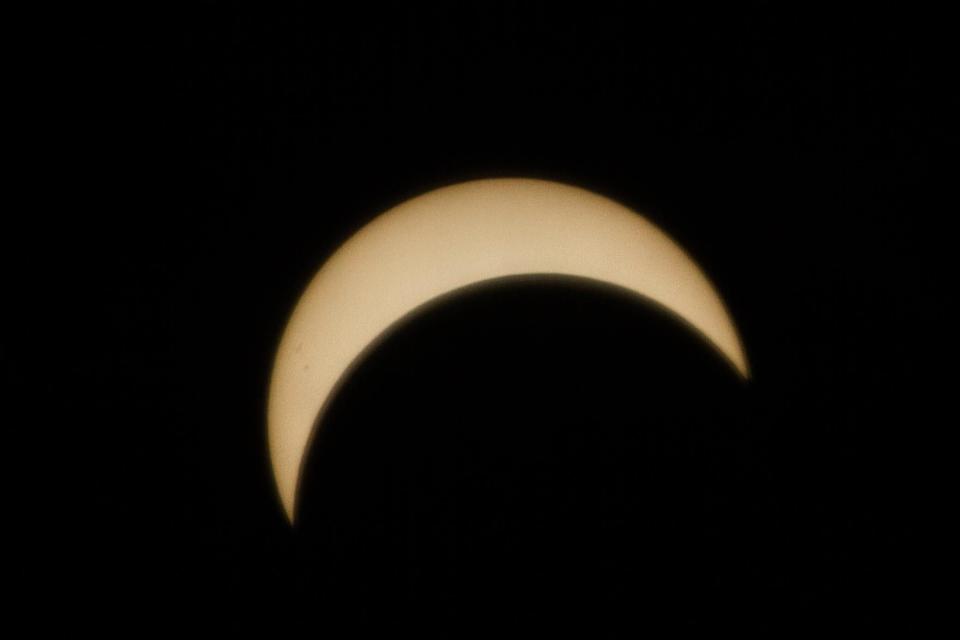
If your solar eclipse interest has been piqued, here’s some information that might come in handy during your eclipse watch party.
A Solar eclipse always occurs about two weeks before or after a lunar eclipse, usually with two eclipses in a row, but sometimes there are three during the same eclipse season, reports TimeandDate.com.
The total solar eclipse in April will be the second eclipse this season. The first eclipse of the season is a penumbral lunar eclipse on March 25, 2024.
A penumbral lunar eclipse is when the Sun, Earth and Moon are imperfectly aligned and Earth blocks some of the Sun’s light from directly reaching the Moon’s surface. During the eclipse, Earth covers all or part of the moon with the outer part of its shadow.
According to Great American Eclipse, the inner black circle of the Moon is the umbra and is where the shadow is complete — a total eclipse of the Sun. The outer shadow circle is the penumbra and shows the extent of the partial eclipse.
When a solar eclipse reaches totality, nocturnal wildlife mistakenly wake up, thinking it is nighttime already, and diurnal wildlife think it’s time to fall asleep, according to NASA.
Got a tip or a story idea? Contact Krys'tal Griffin at [email protected].
This article originally appeared on Delaware News Journal: Total solar eclipse in April will be last visible in U.S. until 2044
